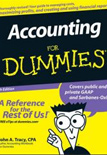Securing publicity in the media is a challenge, but increase your chances of getting your message published or broadcast by setting out your press release in the correct format…
[STATUS] Here, you need to instruct the editor when the story you’re pitching can be published by assigning the press release with a status, presented in CAPS and underlined. There are two statuses commonly used by publicity writers, journalists and editors:
- FOR IMMEDIATE RELEASE – used if the information contained in the press release can be published immediately, or
- EMBARGOED UNTIL (DATE) – used if the press release contains sensitive information which can only be made public after a certain date.
[Headline] As in a news story, the headline (bolded) must be an attention-grabber, and sum up the content of the story.
[City, Province, Date] Always precede your story by orientating your reader with time and place details.
[Lead paragraph] Write an enticing lead which draws readers into the story. The lead should answer the questions who, what, where, when and how, and should immediately follow the city, province, date details.
[Body copy] Body copy is the main body of your story, broken down into appropriate paragraphs. Here, you can develop the facts presented in the lead, providing readers with additional detail, and background information. Your press release should be no more than two pages max. Should you go over one page, write the word, ‘more’ at the bottom of the page to inform the editor that there are additional pages.
[Company Information] Provide your company name and information about what it is that your company does.
[Contact Details] Include the name and contact details of the designated media liaison person in your company.
[NOTE(S) TO EDITOR] Here, you can let the editor know if you’re including any additional information not contained in the press release itself, for example, if you’re attaching photographs, or point the editor to further resources.
[–ends–] At the very end of your press release, type the word ‘ends’. This indicates to editors that there are no more pages to be read. ‘Ends’ is presented on the right hand side of the page. It’s important, since loose pages can so easily be lost in newsrooms.
[WORD COUNT] Provide a word count at the end of your press release, so that editors know how long your story is, and how much space they would have to assign to it, should they wish to run it.
See this press release sample for further explanation…
“FOR IMMEDIATE RELEASE
Local Baker Set to Become World-Famous
Durban, kwaZulu-Natal, 11 July 2011 – Durban baker Shirley Sugar wowed dignitaries attending a conference in the city this week, with an amazing multi-tiered South African flag chocolate cake.
Ms Sugar is the owner of Sugar Cakes, a Durban patisserie, and was one of the official confectionary suppliers to the International Conference on Urban Development, held at Durban’s International Convention Centre between 7 and 10th July. The Conference was attended by dignitaries from around the world.
Her cake – a six-tiered chocolate cream cake, featuring the South African flag – drew much attention from conference attendees, as much for its decadent taste as for its flamboyant styling. Said Herbert Smith, of the Conference’s organizing committee, Ms Sugar’s cake was ‘simply the most delicious cake’ he’d ever tasted, and confirmed that he’s asked Sugar Cakes to supply a similar cake for an upcoming conference in London.
Ms Sugar expressed her delight in the boom in business since the Conference. ‘Orders have been rolling in,’ she said.
Sugar Cakes is Durban’s premier cake bakery. Family-owned and run, Sugar Cakes produces decadent wedding cakes, birthday cakes and specialty cakes for conferences and other occasions.
Shirley Sugar
Email: Shirley@sugarcakes.co.za
Tel: 0800-SUGARCAKES
NOTE TO EDITOR: Photograph showing South African flag cake attached.


